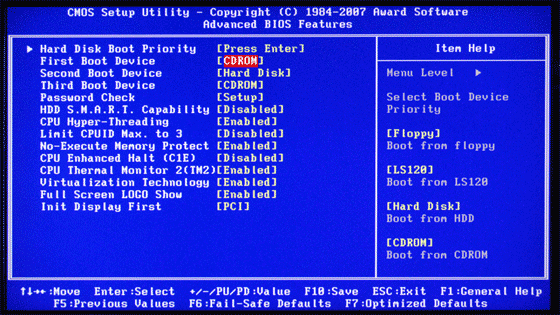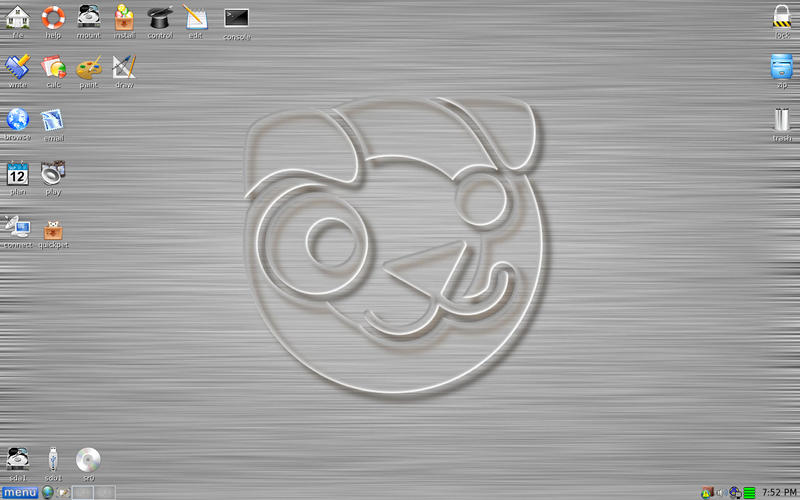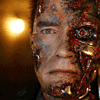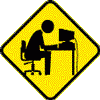
Boot device not found....
#1

 Posted 24 June 2016 - 07:31 PM
Posted 24 June 2016 - 07:31 PM

#2

 Posted 25 June 2016 - 04:32 AM
Posted 25 June 2016 - 04:32 AM

![]() Om Kumar,
Om Kumar,
We will need some more information before we are able to help;
Were you attempting to set up a dual boot with Windows and Kali.
Please provide information about your computer, this includes is it a notebook or desktop, is it a custom build or brand name such as Dell or HP, if a brand name, provide the model name or series number (not serial).
#3

 Posted 25 June 2016 - 05:17 AM
Posted 25 June 2016 - 05:17 AM

My laptop brand is HP and its model number is probook 4540s.. And my os was windows 10 64 bit.
Thanks for replying!! Please help.. I don't wanna loose my data..
#4

 Posted 25 June 2016 - 05:27 AM
Posted 25 June 2016 - 05:27 AM

Had you created a separate partition for Kali as what you describe may suggest that Windows has become corrupted or over written.
Before doing anything else I suggest that you use Puppy Linux to try and back up your data then get back to us.
===================
***Required Hardware***
CD Burner (CDRW) Drive,
Blank CD,
Extra Storage Device (USB Flash Drive, External Hard Drive)
===================
1. Save these files to your Desktop/Burn Your Live CD:
- Download Latest Puppy Linux ISO (i.e.: lupu-528.iso)
Download BurnCDCC ISO Burning Software
There are instructions on how to boot from flash drive with puppy here; /
For computers that have UEFI as opposed to legacy BIOS, to be able to boot from your USB device you may need to disable secure boot and change UEFI to CSM Boot, not all computers and BIOS are the same, please refer to your user manual if you have one as the following steps are only one such example.
Restart the computer, Windows 8 and 8.1 from the Start or desktop screen move your mouse pointer over the upper or lower right corner of the screen, when the Windows Charms appear click the Settings Charm, click on Power and then the Restart option.Windows 10, Click on Start,Power and then Restart.While the computer is re-starting,you will need to continually tap or hold down the particular key that will allow you to access the BIOS on your computer, we will use the F2 key as an example here;
After restarting the computer, when the screen goes black, press and hold down the F2 key, wait for the BIOS to load.
Select Security -> Secure Boot and then Disabled.Select Advanced -> System Configuration and then Boot Mode.Change UEFI Boot to CSM Boot.Save the changes and Exit the BIOS, commonly F10.If your computer will not boot into Windows at all, power up or restart the computer continually tap or hold down the key that will allow you to access the BIOS on your computer and then do the following;
Select Security -> Secure Boot and then Disabled.
Select Advanced -> System Configuration and then Boot Mode.
Change UEFI Boot to CSM Boot.
Save the changes and Exit the BIOS, commonly F10.
- Open BurnCDCC with Windows Explorer
- Extract All files to a location you can remember
- Double Click
 BurnCDCC
BurnCDCC - Click Browse
and navigate to the Puppy Linux ISO file you just downloaded
- Open/Double Click that file
IMPORTANT: Adjust the speed bar to CD: 4x DVD: 1x
- Click Start

- Your CD Burner Tray will open automatically
- Insert a blank CD and close the tray
- Click OK
Puppy Linux Live CD will now be created
2. Set your boot priority in the BIOS to CD-ROM first, Hard Drive Second
-
- Start the computer/press the power button
- Immediately start tapping the appropriate key to enter the BIOS, aka "Setup"
(Usually shown during the "Dell" screen, or "Gateway" Screen)
- Once in the BIOS, under Advanced BIOS Options change boot priority to:
CD-ROM 1st, Hard Drive 2nd
- Open your ROM drive and insert the disk
- Press F10 to save and exit
- Agree with "Y" to continue
- Your computer will restart and boot from the Puppy Linux Live CD

3. Recover Your Data
- Once Puppy Linux has loaded, it is actually running in your computer's Memory (RAM). You will see a fully functioning Graphical User Interface similar to what you normally call "your computer". Internet access may or may not be available depending on your machine, so it is recommended you print these instructions before beginning. Also, double clicking is not needed in Puppy. To expand, or open folders/icons, just click once. Puppy is very light on resources, so you will quickly notice it is much speedier than you are used to. This is normal. Ready? Let's get started.
3a. Mount Drives[list]
- Click the Mount Icon located at the top left of your desktop.

- A Window will open. By default, the "drive" tab will be forward/highlighted. Click on Mount for your hard drive.
- Assuming you only have one hard drive and/or partition, there may be only one selection to mount.
- USB Flash Drives usually automatically mount upon boot, but click the "usbdrv" tab and make sure it is mounted.
- If using an external hard drive for the data recovery, do this under the "drive" tab. Mount it now.
3b. Transfer Files.
-
- At the bottom left of your desktop a list of all hard drives/partitions, USB Drives, and Optical Drives are listed with a familiar looking hard drive icon.
- Open your old hard drive i.e. sda1
- Next, open your USB Flash Drive or External Drive. i.e. sdc or sdb1
- If you open the wrong drive, simply X out at the top right corner of the window that opens. (Just like in Windows)
- From your old hard drive, drag and drop whatever files/folders you wish to transfer to your USB Drive's Window.
For The Novice: The common path to your pictures, music, video, and documents folders for XP is: Documents and Settings >> All Users (or each individual name of each user, for Vista and above C:\Users\$USERNAME\[...]. CHECK All Names!) >> Documents >> You will now see My Music, My Pictures, and My Videos.
Remember to only click once! No double clicking! Once you drag and drop your first folder, you will notice a small menu will appear giving you the option to move or copy. Choose COPY each time you drag and drop.
YOU ARE DONE!!! Simply click Menu >> Mouse Over Shutdown >> Reboot/Turn Off Computer. Be sure to plug your USB Drive into another working windows machine to verify all data is there and transferred without corruption. Congratulations!

#5

 Posted 29 June 2016 - 05:01 AM
Posted 29 June 2016 - 05:01 AM

Not heard back from you Om Kumar, do you still require assistance or is the issue now resolved, an update would be appreciated.
#6

 Posted 01 July 2016 - 07:15 AM
Posted 01 July 2016 - 07:15 AM

I asked hp customer care, and the ugly guy sent me 135 us dollar bill. Please help me!
#7

 Posted 01 July 2016 - 07:23 AM
Posted 01 July 2016 - 07:23 AM

#8

 Posted 02 July 2016 - 04:03 AM
Posted 02 July 2016 - 04:03 AM

Can't I use a hard drive enclosure to copy my data to other pc? And delete everything in the hard disk followed by installation of windows. Ur reply will be highly appreciated.. And also I can boot from usb which is carrying windows 7 file.
If you have an appropriate HDD enclosure you could use that method, Puppy was suggested because we had no way of knowing that you had a HDD enclosure + it would not void any warranty that you may have for the computer.
Once your data has been backed up a clean install is what I would suggest.
#9

 Posted 02 July 2016 - 07:41 AM
Posted 02 July 2016 - 07:41 AM

I really appreciate your help, thank you for your time. Cheers!
#10

 Posted 03 July 2016 - 03:44 AM
Posted 03 July 2016 - 03:44 AM

If you do not already have a HDD enclosure I suggest that you try accessing the present HDD using Puppy Linux first, this will let you know if the data is still present and recoverable before you go to the trouble and cost of purchasing any HDD enclosure, Puppy runs using the system RAM and does not need a HDD to boot from.
Another couple of checks for you to do;
Restart the computer and go into the BIOS; HP notebooks may use F10 or F12;
Is the HDD detected in the BIOS, a Seagate HDD will begin with the letters ST and a Western Digital HDD will begin with WD, other brands vary and please note that any mention of a HDD in the BOOT sequence that is not labelled with such letters is only the boot order and not the BIOS detecting the presence of a HDD, see example attached.
Is the HDD that has Windows on it listed as the first or second boot device, on computers that also have a DVD drive the boot sequence is commonly DVD drive first and the HDD second or the HDD first and the DVD drive second once an OS has been installed.
You are welcome ![]()
#11

 Posted 05 July 2016 - 04:49 PM
Posted 05 July 2016 - 04:49 PM

On post 1 you stated boot device not found. if this is so then you can't get into windows.
If you can't get to a full bootable OS then using an enclosure won't work.
You need to get to the desktop so you can copy and paste your data.
Can you get to the desktop?
#12

 Posted 05 July 2016 - 06:15 PM
Posted 05 July 2016 - 06:15 PM

#13

 Posted 08 July 2016 - 09:28 AM
Posted 08 July 2016 - 09:28 AM

If you do not already have a HDD enclosure I suggest that you try accessing the present HDD using Puppy Linux first, this will let you know if the data is still present and recoverable before you go to the trouble and cost of purchasing any HDD enclosure, Puppy runs using the system RAM and does not need a HDD to boot from.
Another couple of checks for you to do;
Restart the computer and go into the BIOS; HP notebooks may use F10 or F12;
Is the HDD detected in the BIOS, a Seagate HDD will begin with the letters ST and a Western Digital HDD will begin with WD, other brands vary and please note that any mention of a HDD in the BOOT sequence that is not labelled with such letters is only the boot order and not the BIOS detecting the presence of a HDD, see example attached.
Is the HDD that has Windows on it listed as the first or second boot device, on computers that also have a DVD drive the boot sequence is commonly DVD drive first and the HDD second or the HDD first and the DVD drive second once an OS has been installed.
You are welcome
Have you been able to do the above Om Kumar.
Similar Topics
1 user(s) are reading this topic
0 members, 1 guests, 0 anonymous users
As Featured On:
















 Sign In
Sign In Create Account
Create Account

